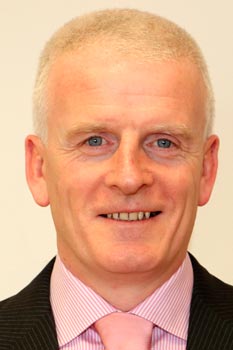
The five main issues facing the new Community Health Organisations were integration, autonomy, boundaries, dismantling old structures and politics, Tony Canavan, Chief Officer, HSE CHO Area 2, which covers Galway, Mayo and Roscommon, told a meeting of the HMI West Forum in Merlin Park Hospital, Galway.
Challenges were also posed by growing demand, geography, unforeseen events and money.
Speaking on “The New Community Healthcare Organisation,” Mr. Canavan said that the CHO was a work in progress so he would outline the progress that had been made to date and give some sense of where we were headed for next. As with all management structures, the CHO management structure had issues.
“The CHO has its origins in the ‘Pat Healy’ report, also known as The Report and Recommendations of the Integrated Service Area Review Group, which was published by the HSE in 2014.
“Essentially, the report recommended a division of the country into nine geographical patches, each containing approximately 450,000 to 500,000 population.”
He said each CHO would provide primary care, social care, mental health and health and wellbeing services to its population.
In some cases, these geographical patches were the same as the Health Board Areas which were established in the late ‘70s and prevailed for three decades before the HSE was established in 2005. “Our own CHO2 is an example of this. Others, of course, are more complicated, such as Area 1 which combines the old North West with part of the old North East Health Boards.
If these organisations are given or indeed earn the autonomy to make local decisions, then this structure should be more responsive to local service requirements.
“The CHO boundaries were drawn with an eye to a number of criteria including, population size, Hospital Group location and natural patient linkages.
While the overall fit is good, “We are left with a small number of anomalies including the fact that some CHOs have to link with a number of hospital groups and the boundaries do not match up with the regional health forum boundaries.”
Mr. Canavan said the Healy Report envisaged that each CHO would be managed by a CHO management team comprising a Chief Officer, a Head of Social Care, Primary Care, Mental Health and Health and Wellbeing.
It also envisaged that each team would have a Head of Finance, Head of HR, Head of Corporate Services and two Leads – a Lead for Quality and Professional Development and a Lead GP.
“Significant progress has been made across the country on populating these positions in the nine CHOs.
“The other key recommendation of the Healy Report was the establishment of the Health and Social Care Networks across the country within each CHO. It was envisaged that the HSCN would be a geographical patch serving the needs of a population of approximately 50,000 people.
“Each HSCN would be further sub divided into Primary Care teams each serving a population of 10,000 on average.
“Progress has been made with the appointment of the CHO management teams across the country and since September 2015, all Chief Officers are now in post.”
List of Chief Officers
- Area 1: John Hayes Donegal, Sligo/Leitrim/West Cavan & Cavan/Monaghan
- Area 2: Tony Canavan Galway, Mayo, Roscommon
- Area 3: Bernard Gloster Clare, Limerick, North Tipperary/East Limerick
- Area 4: Ger Reaney Kerry LHO, North Cork, North Lee, South Lee, West Cork
- Area 5: Aileen Colley South Tipperary, Carlow, Kilkenny, Waterford, Wexford
- Area 6: Martina Queally Wicklow, Dun Laoghaire, Dublin South East
- Area 7: David Walsh Kildare/West Wicklow, Dublin West, Dublin South City, Dublin SW
- Area 8: Pat Bennett Laois/Offaly, Longford/Westmeath, Louth, Meath
- Area 9: Gerry O’Neill Dublin North, Dublin North Central, Dublin North West
Mr. Canavan said that in most cases, heads of service for social care, mental health, health & wellbeing and primary care were either identified or in place for each CHO management team. Similarly with heads of finance and HR.
“The boundaries of the HSCNs have been drafted and the process of aligning other service boundaries to these has commenced. While this process will take a number of years, the end result will be that mental health and primary care services will share boundaries across the country.
“We have started the process of talking to GPs regarding a managerial role at CHO level and at HSCN level.
“As yet we haven’t proceeded with the appointment of Leads for Quality and Professional Development or of the Head of Corporate Services.”
The Reform Programme currently underway is based on returning decision making and autonomy to local CHOs and Hospital Groups. If these organisations are given or indeed earn the autonomy to make local decisions, then this structure should be more responsive to local service requirements.
One of the key challenges going forward, is to develop local autonomy, which it is acknowledged must be earned, while maintaining National Standards for Quality, Access and other key parameters.

